Divan-i Khaqan دیوان خا قا ن (The collected works of the Emperor) 1802-03
Manuscript on paper with ornament in opaque watercolour including metallic paints. | 42.5 x 28.2 cm (book measurement (conservation)) | RCIN 1005020
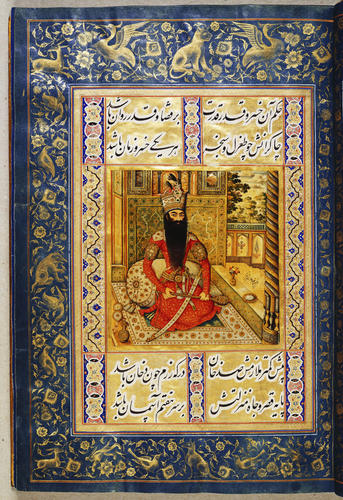
Fath Ali Shah Qajar, Shah of Iran (1772-1834)
Divan-i Khaqan دیوان خا قا ن (The collected works of the Emperor) 1802-03

Fath Ali Shah Qajar, Shah of Iran (1772-1834)
Divan-i Khaqan دیوان خا قا ن (The collected works of the Emperor) 1802-03

Fath Ali Shah Qajar, Shah of Iran (1772-1834)
Divan-i Khaqan دیوان خا قا ن (The collected works of the Emperor) 1802-03
Fath Ali Shah Qajar, Shah of Iran (1772-1834)
Divan-i Khaqan دیوان خا قا ن (The collected works of the Emperor) 1802-03

Fath Ali Shah Qajar, Shah of Iran (1772-1834)
Divan-i Khaqan ????? ?? ?? ? (The collected works of the Emperor) 1802-03
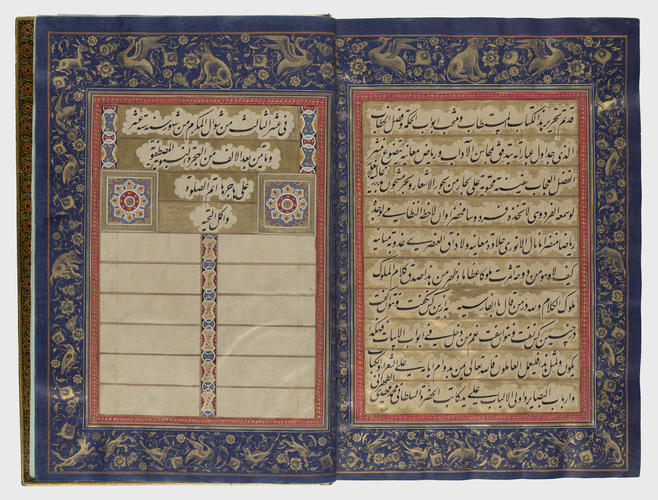
Fath Ali Shah Qajar, Shah of Iran (1772-1834)
Divan-i Khaqan دیوان خا قا ن (The collected works of the Emperor) 1802-03

Fath Ali Shah Qajar, Shah of Iran (1772-1834)
Divan-i Khaqan ????? ?? ?? ? (The collected works of the Emperor) 1802-03
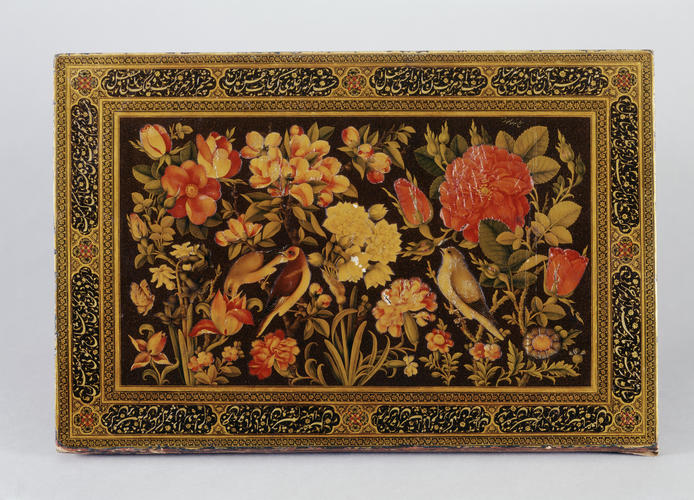
Fath Ali Shah Qajar, Shah of Iran (1772-1834)
Divan-i Khaqan ????? ?? ?? ? (The collected works of the Emperor) 1802-03

Fath Ali Shah Qajar, Shah of Iran (1772-1834)
Divan-i Khaqan ????? ?? ?? ? (The collected works of the Emperor) 1802-03

Fath Ali Shah Qajar, Shah of Iran (1772-1834)
Divan-i Khaqan ????? ?? ?? ? (The collected works of the Emperor) 1802-03
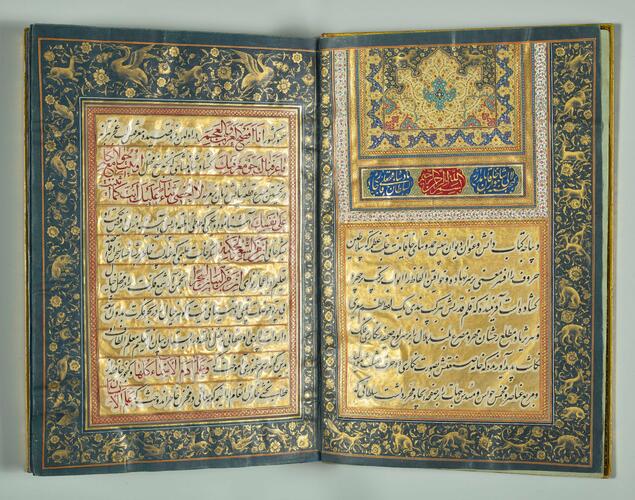
Fath Ali Shah Qajar, Shah of Iran (1772-1834)
Divan-i Khaqan ????? ?? ?? ? (The collected works of the Emperor) 1802-03
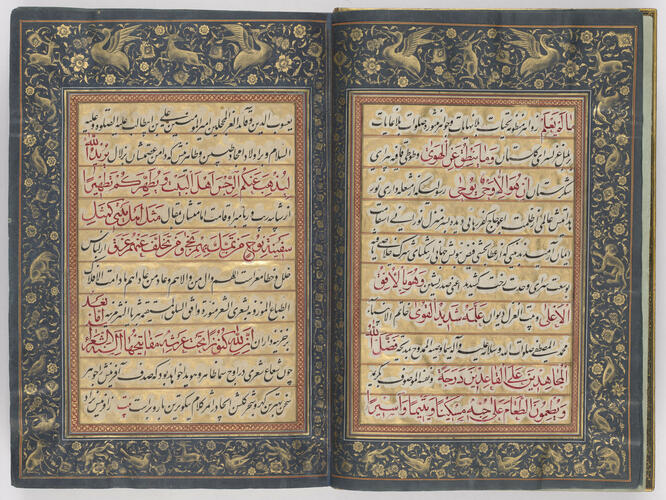
Fath Ali Shah Qajar, Shah of Iran (1772-1834)
Divan-i Khaqan ????? ?? ?? ? (The collected works of the Emperor) 1802-03
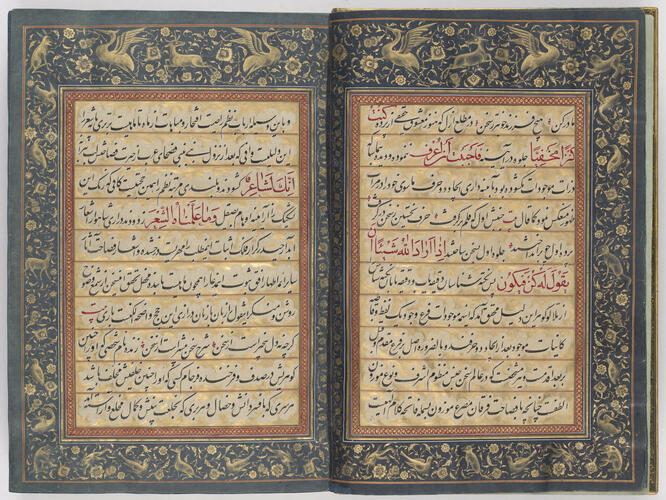
Fath Ali Shah Qajar, Shah of Iran (1772-1834)
Divan-i Khaqan ????? ?? ?? ? (The collected works of the Emperor) 1802-03
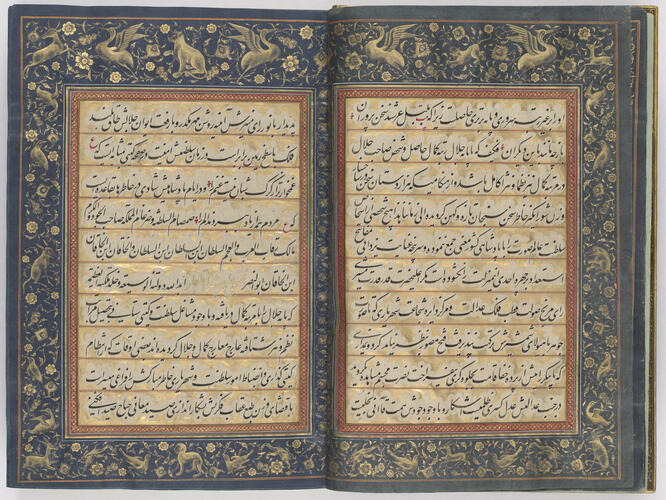
Fath Ali Shah Qajar, Shah of Iran (1772-1834)
Divan-i Khaqan ????? ?? ?? ? (The collected works of the Emperor) 1802-03
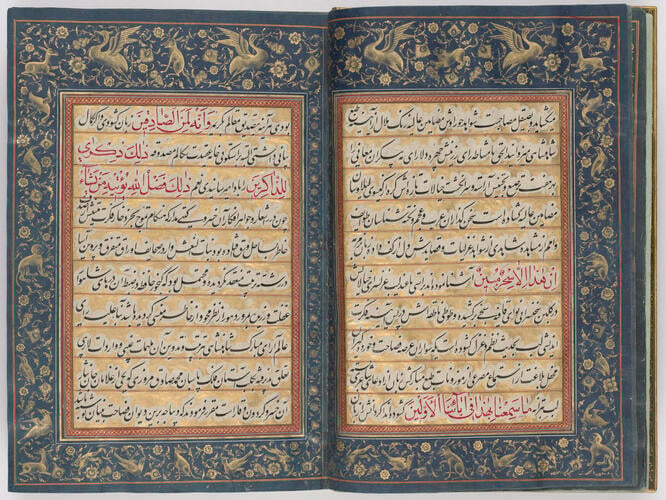
Fath Ali Shah Qajar, Shah of Iran (1772-1834)
Divan-i Khaqan ????? ?? ?? ? (The collected works of the Emperor) 1802-03

Fath Ali Shah Qajar, Shah of Iran (1772-1834)
Divan-i Khaqan ????? ?? ?? ? (The collected works of the Emperor) 1802-03
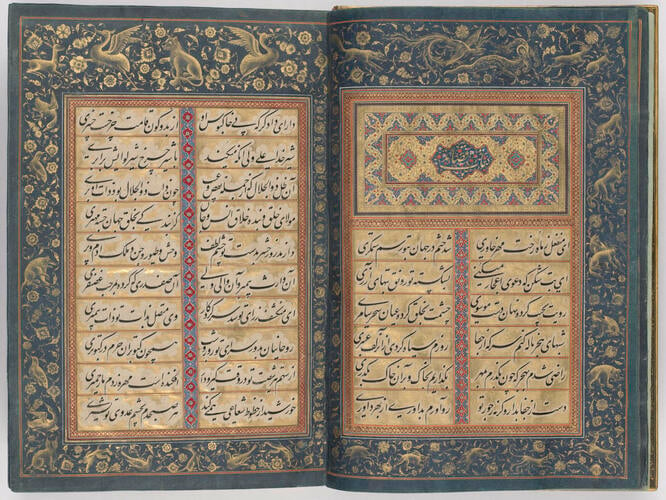
Fath Ali Shah Qajar, Shah of Iran (1772-1834)
Divan-i Khaqan ????? ?? ?? ? (The collected works of the Emperor) 1802-03
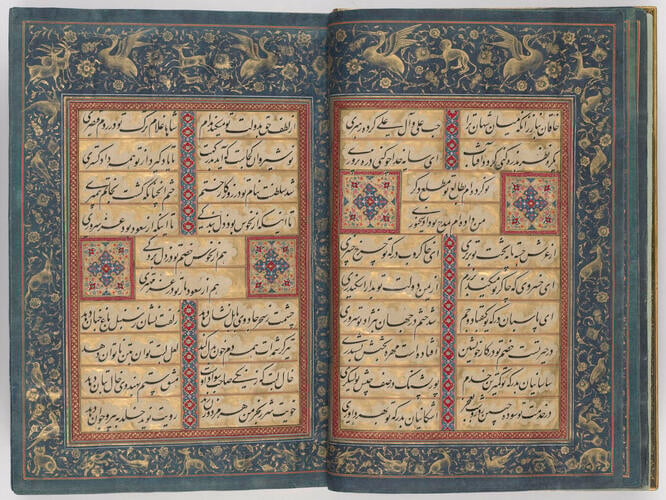
Fath Ali Shah Qajar, Shah of Iran (1772-1834)
Divan-i Khaqan ????? ?? ?? ? (The collected works of the Emperor) 1802-03
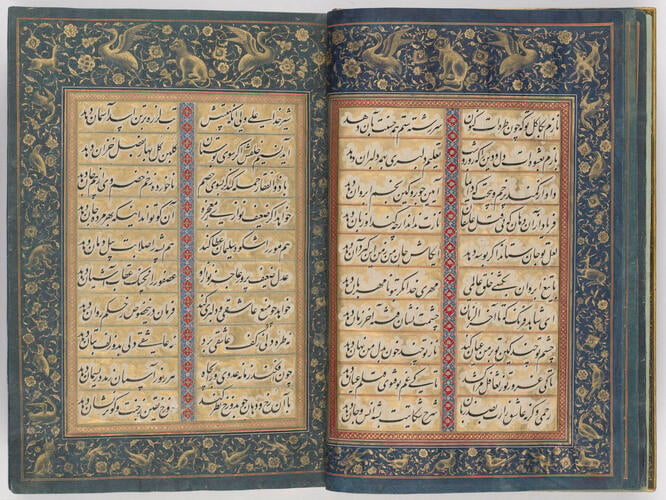
Fath Ali Shah Qajar, Shah of Iran (1772-1834)
Divan-i Khaqan ????? ?? ?? ? (The collected works of the Emperor) 1802-03
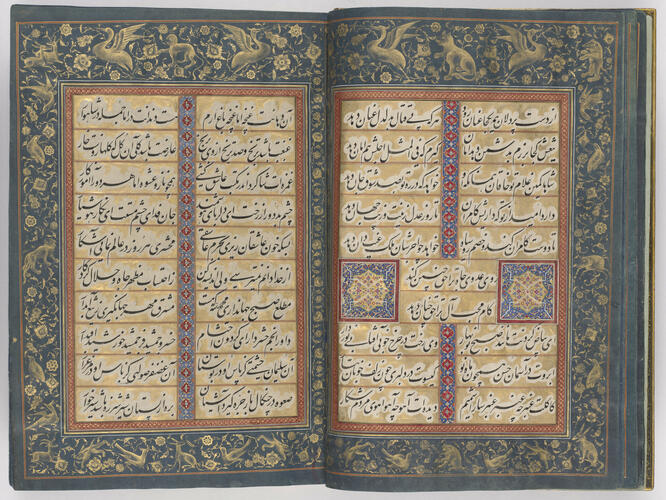
Fath Ali Shah Qajar, Shah of Iran (1772-1834)
Divan-i Khaqan ????? ?? ?? ? (The collected works of the Emperor) 1802-03

Fath Ali Shah Qajar, Shah of Iran (1772-1834)
Divan-i Khaqan ????? ?? ?? ? (The collected works of the Emperor) 1802-03




















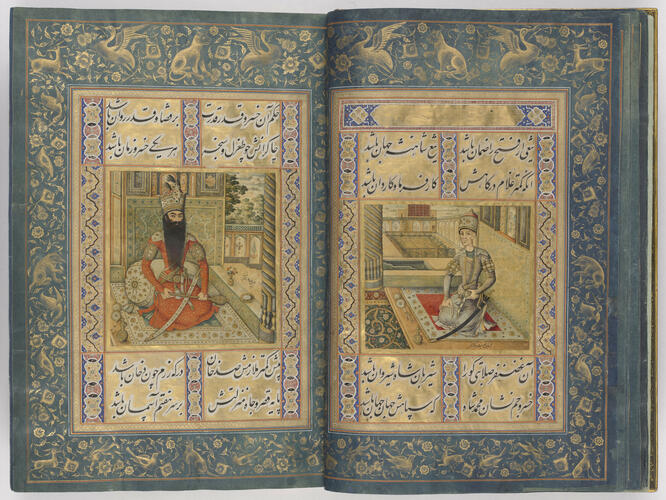
-
Fath Ali Shah, the early 19th century ruler of Persia, wrote poetry under the pen-name Khaqan and sent lavish copies of his Divan ('Collected Works') as gifts to foreign sovereigns and dignitaries. Edward Scott Waring, an Englishman who travelled through Iran in 1802 noted that 'The King of Persia has revived a taste for literature, so scandalously neglected by his predecessors. He is himself a man of considerable taste and erudition, and is also a tolerable poet.' Fath Ali Shah presented this magnificent manuscript of his Divan to Sir Gore Ouseley in Tehran in 1811 along with several other gifts for presentation to the Prince Regent (later George IV).
The large volume is dated 1216AH (1802) and represents the highest standards of contemporary Qajar manuscript production. Written by calligrapher Muhammad Mehdi al-Tehrani, the nastaliq script is highlighted with a solid wash of gold paint and set into dark blue borders filled with glittering birds and animals. The opening folio is decorated with the first of three large and superbly illuminated headings which divide the text (ff. 1v, 7v and 20v), and incorporates the Persian imperial motif of the lion and the sun. Following the preface, the qasidahs (long poems) begin on f.7v under a rectangular illuminated heading above which are depictions of the simurgh and a dragon. The third illuminated heading on f.20v indicates the beginning of the qhazals (shorter poems), decorated by a lion and two pelicans.
Early in the manuscript, on ff.12v-13r, are facing portraits of Fath Ali Shah and predecessor dated 1217 (1802-3). Both these and the manuscript's painted lacquer covers are signed by Mirza Baba, the shah's painter laureate. Sir Gore Ouseley’s brother, William, who witnessed the manuscript being packed in Tehran recorded that Mirza Baba was ‘employed seventeen years on the miniature pictures, illuminations and various ornaments, of this work, particularly the portraits of the royal author, and of his uncle Aga Muhammed,” (Travels in Various Countries vol. 3, pp. 372-3).
Fath Ali Shah is shown in the porch of the Divan Khanah of the Golestan Palace in Tehran, a space built in 1802-3 for Fath Ali Shah’s spring coronation, with twisted columns and marble dados overlooking the palace gardens. He wears his coronation regalia including the tall, jewel encrusted Kiyani crown with black heron feathers. On his arm bands he wears two famous diamonds, the Koh-i-nûr (mountain of light) and darya-i nur (sea of light), both trophies of Nadir Shah’s conquest of Delhi in 1739 and taken by Aga Muhammad Shah from Nadir Shah’s successors.
Sir William Ouseley (brother of Sir Gore) presented the manuscript to the Prince Regent in London on 30 November 1812. A catalogue of Carlton House lists the manuscript as ‘A Book – Persian – Superbly bound and ornamented with birds and flowers painted, varnished and gilt on the cover, a white gauze cover with a coloured flowered border, tied with a gold tape, and a shawl pattern cover lined with red silk and a black silk border. This book is written in manuscript by The Emperor of Persia, it contains 181 leaves, the whole of which are highly ornamented in gold and various coloured ornaments, on the 169th leaf will be found the portrait of the Emperor of Persia painted in a sitting attitude and on the 170th leaf is also an other male portrait sitting in the like attitude’ (RA GEO/ADD/19/43: Inv. No. 2324).Provenance
Sent to George IV when Prince Regent by the Author in 1811. Presented by Sir William Ouseley, 30 November 1812.
-
Creator(s)
(artist)(nationality)Acquirer(s)
-
Medium and techniques
Manuscript on paper with ornament in opaque watercolour including metallic paints.
Measurements
42.5 x 28.2 cm (book measurement (conservation))
435 x 295 x 56 mm (whole object)







